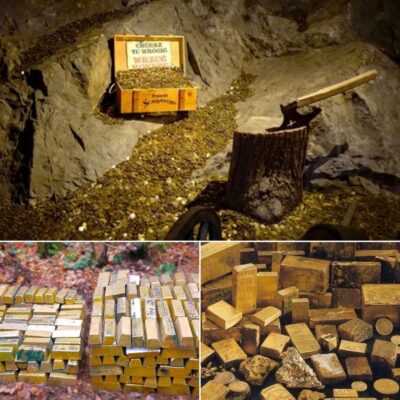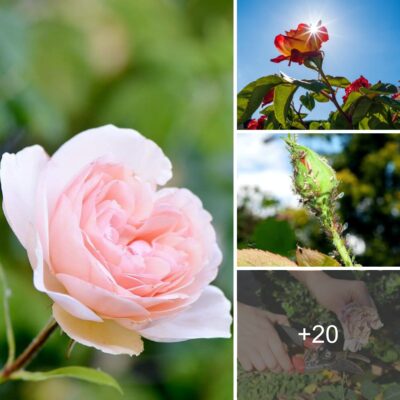When it comes to making gardening a little easier, having the right tools for the job can make all the difference in the world. But what are the best gardening tools? Sometimes the best tool is as simple as repurposing something you already own. Or it’s taking a chance on that one hand tool you’ve seen in a seed catalog year after year, and after using it, you wonder how you’ve been gardening this long without it.
We’ve put together a curated list of the best gardening tools that will make your time in the dirt more efficient, productive and hopefully, more enjoyable.
1. The Right Gloves

I know this one seems painfully obvious, but hear me out.
I’m a big advocate for getting your hands in the dirt. As a society, we’ve become obsessively clean. Putting your hands in the earth exposes you to all kinds of microbes and organisms. Not only is it a boon for your immune system, but it’s also a great way to feel more connected with the task at hand – playing in the dirt.
All that being said, some jobs require a good pair of gardening gloves, weeding for instance. For many, choosing gloves is more of an afterthought.
How many of us have absent-mindedly grabbed a pair of gloves off the rack without any thought about what we will use them for?
I know I’m guilty of this.
Put some thought into this seemingly unimportant tool before you head out to the store. Ask yourself a few important questions:
- Will I be using gloves all the time in the garden, or will I go barehanded for much of it?
- Will I be doing any pruning of thorny or prickly weeds or plants?
- Do my gloves need to be waterproof?
- Do I want a pair of gloves that will last me a decade or a season?
- Do I need a couple of pairs of gloves for different tasks?
Now you can make an informed purchase when confronted with a rack of them at the garden center.
2. A 5-Gallon Bucket or Two
Yup, a plain old five-gallon bucket is one of the best gardening tools going. You probably already have one hanging around that you can put to good use. A five-gallon bucket is a gardener’s best friend.
Use a 5-gallon bucket to:
- store all of your hand tools and gloves.
- flip over and use it as a stool while you’re weeding.
- use your bucket to transport weeds to the compost pile or produce to the house.
- fill the bucket with water and use a cup to water the base of plants, right where they need it.
- grow potatoes in your bucket or other fruits & veggies.

3. Kneeling Pad or Knee Pads

I resisted having a dedicated tool to kneel on for the longest time when I was gardening. It was always one of those things I told myself I would need when I was older, and using some sort of padding for my knees was like admitting defeat.
Which is silly.
As the saying goes, “An ounce of prevention is worth a pound of cure.”
So often, we gardeners are guilty of putting our bodies through the wringer without any thought of preventing injury. I mean, it’s just gardening; after all, it’s not like it’s a full-contact sport.
But it’s still hard, physical labor, and you can injure yourself, making the rest of the growing season a misery. Taking the time to care for how we treat our bodies each time we garden will help ensure a long future of playing in the dirt.
You can use any number of things to protect your knees while you’re kneeling in the garden:
- A kneeling pad
- Gardening knee pads
- An old throw pillow that’s gone flat
- A folded yoga or exercise mat.
4. Heated Seed Mat
For the gardener who prefers to start their seedlings rather than buy them from a nursery, germination can be a toss of the dice. Will it sprout, or won’t it?
And if you live in a cool climate, even starting seeds indoors may not give you the temperatures needed to ensure successful germination.
There are plenty of seeds that require warmer soil temperatures and take a couple of weeks to germinate. Peppers are a good example. If you find that a couple of weeks have passed and nothing has germinated, you may have to start all over again, only now you’re that much closer to the growing season.
Enter the heated seed mat.
Seed mats are an electric heating pad you set under your seed tray that delivers just the right amount of heat to warm your newly-planted seeds, ensuring germination success. These brilliant little mats are usually the same size as most common seed starting trays, so they sit snuggly underneath them.
Once your seeds have germinated, you can roll them up and stash them away for next year.
A heated seed mat can be a real game-changer for anyone starting seeds at home. They’re relatively inexpensive, around $30 each and give your home nursery a professional boost to start the season.
If you’ve been on the fence about whether they’re worth the fuss – yes, they are.
5. A Garden Planner

I know very few seasoned gardeners who don’t keep a garden journal or yearly garden planner. During the growing season, it’s easy to remember which plants did well, what pests you struggled with and which side of the garden you planted the beans on.
But trying to remember all of those things when you’re planning your garden the following spring can prove to be a daunting task.
A garden planner doesn’t have to be fancy; even a simple blank journal will do. However, if you like to keep things organized and searchable in the future, you may want to consider picking a planner designed specifically for gardening.
Lucky for you, I did a write-up on some popular garden planners, which will help simplify choosing the best one for you.
6. Sun Hat

Look, I’m just going to say this once. If you’re going to garden, you have to look the part, which means wearing a sun hat. Generally speaking, the floppier and bigger, the better. Trust me on this; it has nothing to do with protecting your skin and eyes from damaging UV rays.
Nope, this is a dress code.
I mean, sure, wearing a hat can make seeing into that tangle of tomatoes much easier when the sky is blazing overhead. And wearing a decently sized hat can protect the back of your neck from getting sunburn. A proper sun hat can even protect you from a bit of rain as you make a mad dash back into the house.
There are plenty of practical and healthful reasons to wear a sturdy, wide-brimmed sun hat when gardening, but none of them matter. If you want to be a part of the club, you gotta wear a hat. Bonus points if it’s old and looks like someone sat on it.
7. Hori Hori Knife

This is one of those tools that I scoffed at for ages. It was for “fancy” gardeners, and I was quite content with my trusty spade and my old hoe. Not to mention it looked a little intimidating, more like something you would use hunting rather than in the garden.
But then I was gifted one by someone who was clearly wiser than me, and said they used theirs all the time.
Despite myself, I kept reaching for this one tool repeatedly while I was working.
It’s the perfect shape for digging, so it made short work of making holes for my transplants. And because it is, after all, a knife, I could easily cut the twine from around the hay we bought for mulching. The tip of a Hori Hori knife makes the perfect little rows to plant seeds in too.
A good Hori Hori knife can replace a multitude of other hand tools in the garden and, if you keep it sharp, can even handle tougher pruning jobs.
Plus, there’s the added benefit that anyone will think twice about attacking you while you’re gardening.
8. Coated Seeds or Seed Tape
If you’ve ever tried to plant lettuce or carrots out in the fresh dark earth, then you know how trying it can be to see where that tiny carrot seed ended up or if you managed to plant one lettuce seed or six in that hole.
Coated or pelleted seeds or seed tape are the answer.
This brilliant invention has saved many a gardener the headache of dealing with teensy seeds.
Individual seeds are coated in an inert material that dissolves in the soil as the seed germinates, making it easier to see and handle carrot, lettuce and other small seeds. Some seed companies may even inoculate the material used to coat the seeds with fertilizer or even mycorrhizae to give seeds an extra boost.
Seed tape is exactly what it sounds like and is even easier to use than pelleted seeds.
Seeds are spaced evenly between two pieces of a thin paper “tape” and sealed together. To plant the seeds, cut or tear off the length of seed tape equal to your row and plant the seed tape at the correct depth. As the plants germinate, the tape holding the seeds in place dissolves.
This season give coated seeds or seed tape a try. They’re one of the best gardening tools out there to save your eyes and your sanity.
9. Watering Wand

Sure, you can water with a watering can, a bucket, or even straight from the hose, but a watering wand combines all of the best features of those methods into one simple tool.
I know it doesn’t seem like the sort of tool that would make a big difference, but it’s that simplicity that makes a watering wand so brilliant.
If you still have delicate seeds waiting to germinate outside, the last thing you want to do is blast them with the heavy spray of a hose, and even the sprinkle of a watering can will wash seeds away. But a watering wand with a fine mist setting is the perfect tool to keep newly planted seeds moist without washing them away or impacting the soil.

When it comes time to water your hanging baskets or buckets, having a watering wand means no more lifting awkward and heavy watering cans over your head. And the extra length afforded by a watering wand also makes watering at the base of plants in the middle of a raised bed easier.
10. A Dedicated Garden Cart

You may already have a wheelbarrow, so getting some sort of cart for the garden may seem superfluous. But let’s face it, that wheelbarrow can’t help you out in the garden if it’s loaded with firewood or new stone for the driveway whenever you need it.
Having some sort of dedicated cart just for the garden makes a lot of sense.
A garden cart is great for hauling large piles of weeds to the compost pile; it’s great for moving heavy bags of soil, compost or potting mix. And that bumper crop of pumpkins isn’t going to haul itself up to the porch.
If your garden is further away from the house, a garden cart is one of the best gardening tools you can own. It means one trip out to the garden and one trip back up to the house when you’re done. You can haul everything you need in one trip.
Plus, it’s a great way to keep all of your gardening tools organized and in one spot when you aren’t out playing in the dirt.
11. Soil Test Kit

When it comes to fertilizing, you’ve probably read over and over again the importance of testing your soil. But how often have you actually done it? Make it a point to pick up a couple of soil test kits every year. They’re inexpensive, around $15 each, and provide you with a wealth of information.
How else can you know if your soil is deficient in certain nutrients if you don’t test it? Without a clear idea of the makeup of your soil, all of your efforts to fertilize are just guessing.
If you grow a garden every year, especially using premixed soils, you have to amend your soil. Frequently you need to add nutrients to the soil throughout the growing season. Set yourself up for success by testing your soil at the beginning and end of the growing season.
Testing your soil can save you time, money and aggravation in the long run.
12. Your local County Cooperative Extension Office
I’m always amazed that more gardeners don’t take full advantage of this free resource. It’s positively brilliant, and you won’t find better local information on gardening right where you live.
Many folks don’t realize this goldmine of free information exists, so you might be wondering what a cooperative extension is.
Back in the early 1900s, the U.S. Department of Agriculture partnered up with universities all across the United States with the sole purpose of creating a nationwide network of agriculture experts to help out local farmers. Over the years, this resource grew to include home gardeners as well as large farms.
You have free access to the knowledge of agricultural experts in major universities in your state simply by visiting or contacting your local county cooperative extension office. If you live nearby your county office, you can visit in person or call or email them for help.
When it comes to finding answers to some of your toughest gardening questions, you really can’t beat your local cooperative extension.
They’re often the first to know when specific annual pests arrive in your area. They are the watchdogs for diseases like blight that can spread through an area.
Your local cooperative extension is the best place for information on native species of plants and pollinators to your area, making them an excellent resource when planning a pollinator garden.
And if you’re having trouble identifying the specific cause of illness in a plant, you can take in a sample for them to analyze.

The county cooperative extension also offers many year-round free or inexpensive courses on topics ranging from starting your first garden to home-canning safety.
Put this amazing resource to work for you!
With a garden shed stocked with the best gardening tools for the job, you’re sure to grow successful gardens for years to come.











